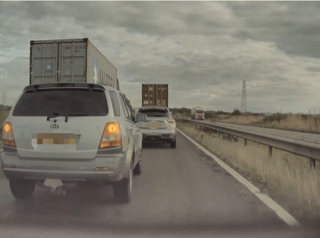
Fleet FAQ
Q:
What are the UK drink drive limits?
A:
Drink drive limits apply across the whole of the UK, although the limits vary depending on which country you are in.
The limits are based on the amount of alcohol detected in someone’s breath, blood or urine.
In England, Wales and Northern Ireland, the drink-drive alcohol limit is:
- 35 micrograms of alcohol per 100 millilitres of breath; or
- 80 milligrams of alcohol per 100 millilitres of blood; or
- 107 milligrams of alcohol per 100 millilitres of urine.
In Scotland, the drink-drive alcohol limit is:
- 22 micrograms of alcohol per 100 millilitres of breath
- 50 micrograms of alcohol per 100 millilitres of blood
- 67 micrograms of alcohol per 100 millilitres of urine
The alcohol content in a drink is usually measured in units (scroll down to read more), but it's not possible to work out how many units will put you over the limit because each person's body absorbs alcohol differently.
Drink-driving penalties
Being in charge of a vehicle while above the legal limit or unfit through drink, drivers may get:
- 3 months’ imprisonment
- up to £2,500 fine
- a possible driving ban
Driving or attempting to drive while above the legal limit or unfit through drink, drivers may get:
- 6 months’ imprisonment
- an unlimited fine
- a driving ban for at least 1 year (3 years if convicted twice in 10 years)
Refusing to provide a specimen of breath, blood or urine for analysis, drivers may get:
- 6 months’ imprisonment
- an unlimited fine
- a ban from driving for at least 1 year
Causing death by careless driving when under the influence of drink, drivers may get:
- life imprisonment
- an unlimited fine
- a ban from driving for at least 5 years
- an extended driving test before your licence is returned
How long do the effects of alcohol take to wear off?
On average it takes one hour for a healthy liver to process one unit of alcohol. However, it depends on body mass, gender and how much food you have consumed. Even if you feel fine after drinking heavily in the evening there is still a high possibility that you will be above the legal limit should you drive the following morning.
What constitutes a unit of alcohol?
One unit of alcohol is 10ml (1cl) by volume or 8g by weight, of pure alcohol.
How do I calculate how many units there are in a drink?
A unit of alcohol is measured by the size (ml) and strength (% alcohol by volume or ABV) of the drink.
Drink and units
A 750ml bottle of red, white or rosé wine (ABV 13.5%) contains 10 units.
The following is a guideline from the NHS website:
(If viewing on a smart phone turn to side to view table)
| Type of drink | Number of alcohol units |
| Single small shot of spirits * (25ml, ABV 40%) | 1 unit |
| Alcopop (275ml, ABV 5.5%) | 1.5 units |
| Small glass of red/white/rosé wine (125ml, ABV 12%) | 1.5 units |
| Bottle of lager/beer/cider (330ml, ABV 5%) | 1.7 units |
| Can of lager/beer/cider (440ml, ABV 5.5%) | 2 units |
| Pint of lower-strength lager/beer/cider (ABV 3.6%) | 2 units |
| Standard glass of red/white/rosé wine (175ml, ABV 12%) | 2.1 units |
| Pint of higher-strength lager/beer/cider (ABV 5.2%) | 3 units |
| Large glass of red/white/rosé wine (250ml, ABV 12%) | 3 units |
*Gin, rum, vodka, whisky, tequila, sambuca. Large (35ml) single measures of spirits are 1.4 units.
















